The Samsung Galaxy Note5 and Galaxy S6 edge+ Review
by Joshua Ho on October 2, 2015 8:00 AM ESTSystem Performance
While subjective judgments of performance may be possible to make when the delta is significant, when the gap gets increasingly close within the range of perceivable performance differences it becomes important to rely on more precise and accurate methods of measuring the overall performance of the mobile device. For the most part, when we’re discussing system performance the single biggest factor is often the SoC, which makes sense given that an SoC contains the CPU, GPU, video encode and decode blocks, memory bus, and DSPs. There are other aspects of the device that determine the overall perception of performance and things that can have a meaningful effect on performance, but the SoC is often the gating factor.
In order to test this we run mobile devices through our standard suite of benchmarks. In the case of the Galaxy Note5 and Galaxy S6 edge+, there shouldn’t be too many surprises given the commonality in components with the Galaxy S6.
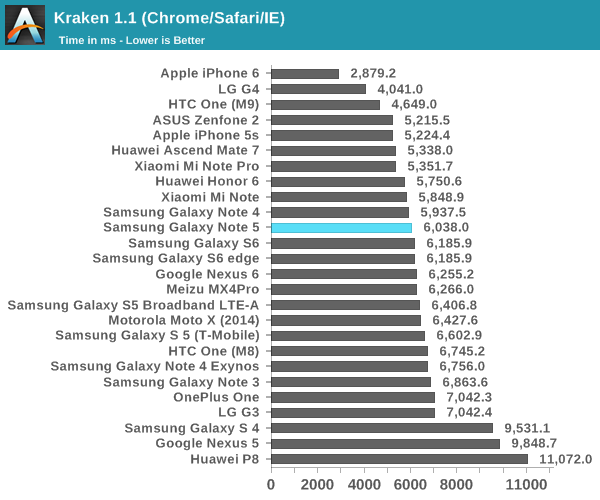
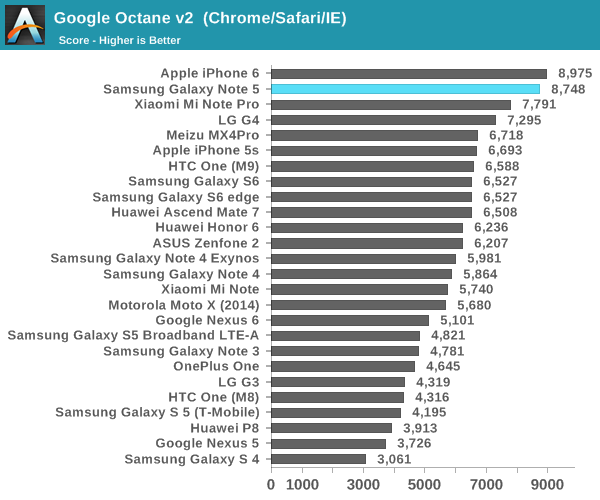
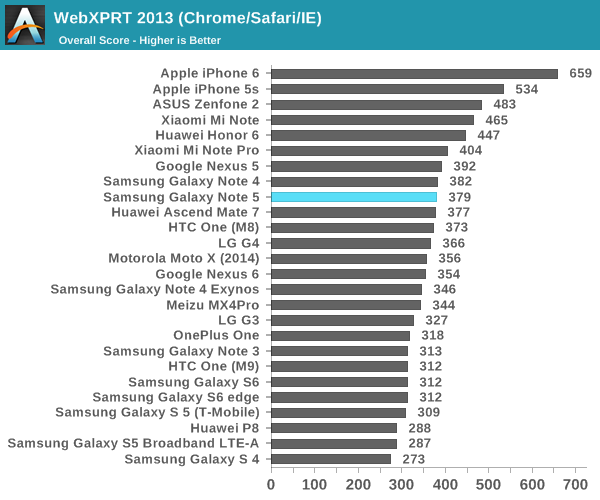
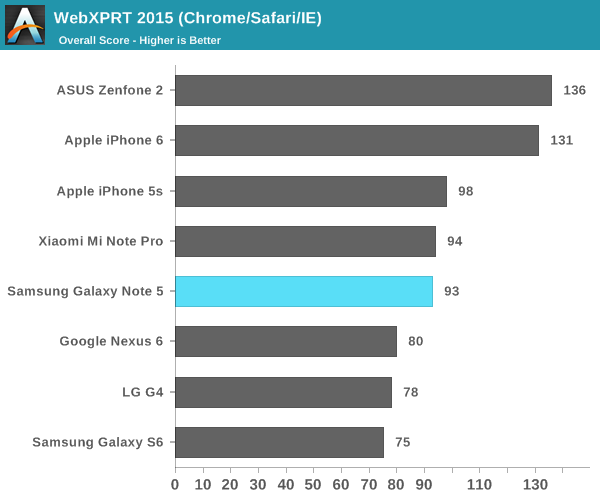

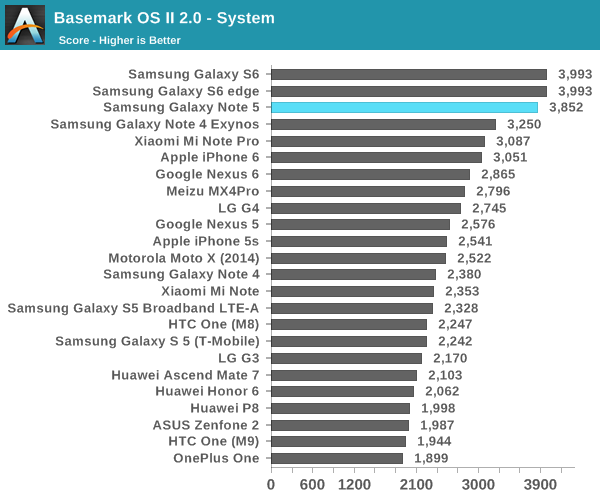
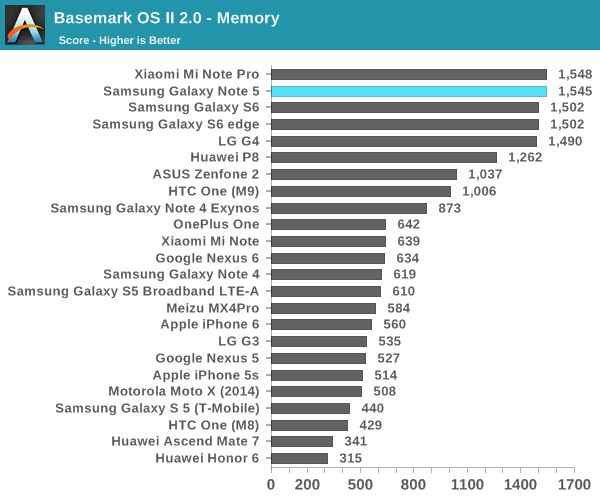
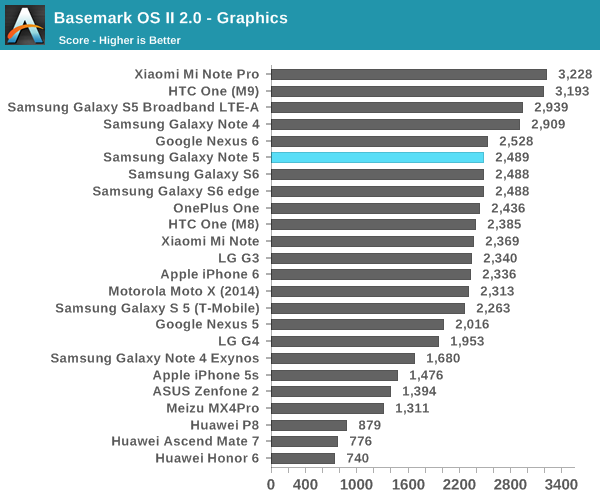

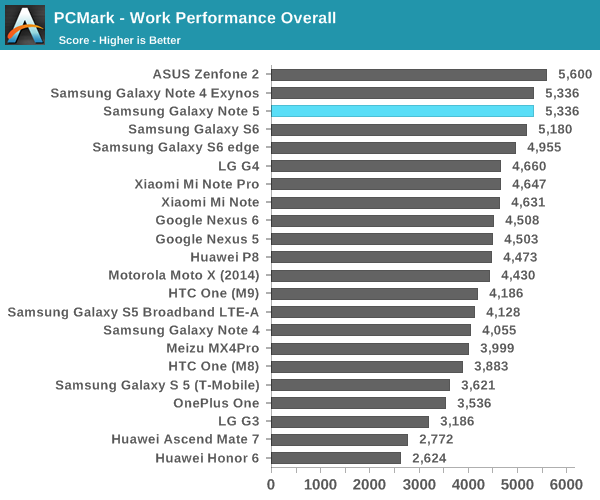

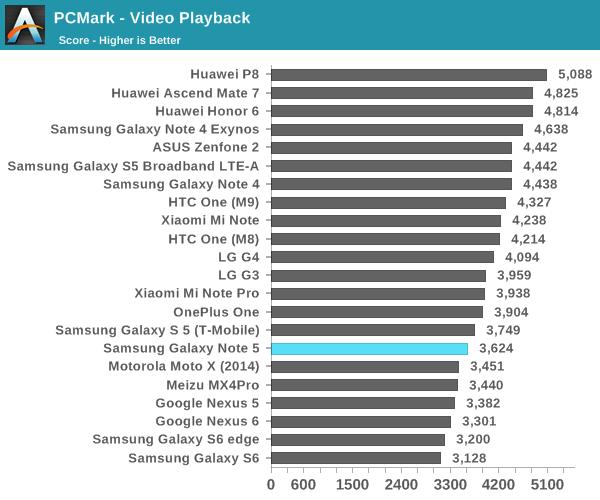
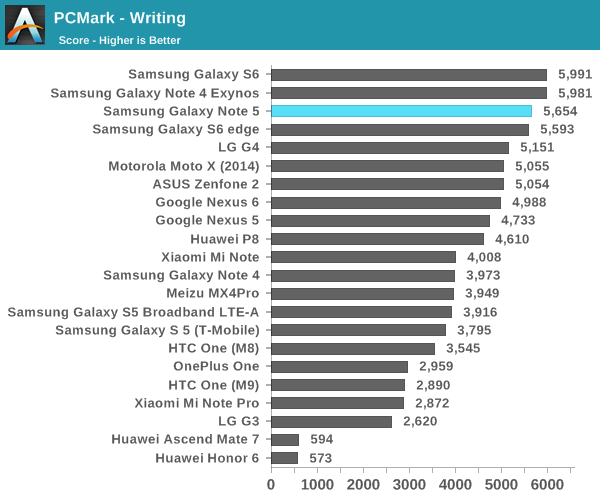
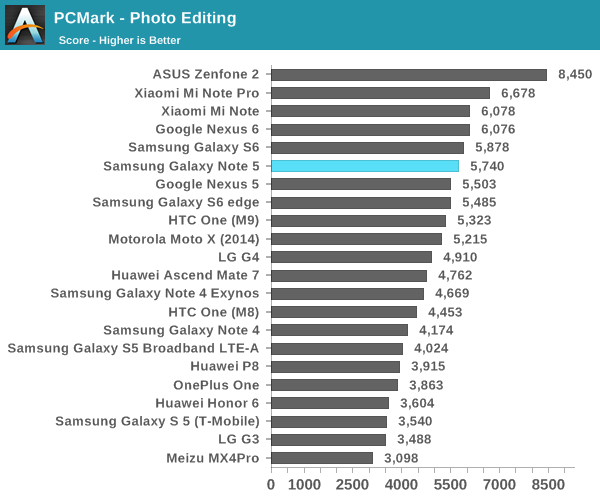
If you guessed that performance in these benchmarks would be similar to the Galaxy S6, you'd be right. Given the shared SoC and general commonality in components performance remains as high as it is with the Galaxy S6. In some cases we see improvements, likely a combination of changes to Chrome and changes to areas like the frequency governor to respond faster to changes in load. It's probably fair to say that the Exynos 7420 will continue to be the best SoC for Android mobile devices in 2015, although it's likely that we'll see significantly increased competition for 2016.










225 Comments
View All Comments
thedons1983 - Sunday, October 18, 2015 - link
Apple genius = regular retard. Those morons don't have a clue. I know more about iOS, than those idiots. Customer service does not equal customer satisfaction. Especially when the idevice in question breaks every few minutes.hrrmph - Sunday, October 4, 2015 - link
Nice review that hits most of the major points, but I would like to see a few more things returned to AT's reviews:- Audio performance (for many people, a phone is their primary audio source, so quality counts);
- Battery configuration (not to push the discussion one way or the other, just remind us whether it does or doesn't have a removable battery.);
- More on storage (considering AT's roots as a PC website, and smartphones' inexorable drive to eventually replace PCs, a wider discussion of storage is needed. Especially with phone cameras recording 4K and everyone's storage needs going up in formation, it is important to discuss how to store things on the device and how to offload them from the device. This issue is dogging Apple, Google, and Samsung, all of whom have now eschewed internal removable storage, without stating when they will develop a replacement, if ever.).
----------------
I would also like to see something added to AT's phone reviews:
- How to control audio playback without looking at the phone (particularly Play, Skip Forward to Next Song, and Skip Back to Previous Song, and Mute. Blackberry nailed most of this with their very helpful physical button configuration, and thus when driving in a car and playing music, I cannot be without a Blackberry. What are Apple, Google, Samsung and the others doing for audio control while driving... without having to buy a new car, that is. Is voice control the only way, and if so does it work well.)
SydneyBlue120d - Sunday, October 4, 2015 - link
Any info about the HEVC encoding? We know the SOC support it, however there is no way to use it, I think this relate to the HEVC licensing knightmare, do You think we will ever be able to use it? Maybe using some third parts app? Thanks a lot.kogaharukka - Sunday, October 4, 2015 - link
For Nand performance, please check it with Androbench v.4.0.The numbers from Androbench v.3.6 cannot show real Nand performance.
SnowleopardPC - Sunday, October 4, 2015 - link
My biggest issues with these phones are that Samsung surveyed Iphone users about what features they wanted in their next phone and of course the Isheep said nothing about Micro SD Card slots and changeable batteries.I went with Samsung because I want my 10,000 MAH extended battery and 200gb MicroSDXC card from Sandisk.
Now all Samsung makes is a cheap IPhone that runs anroid.
And the 128gb version was an after though and "might" be released in the next 2 months, and it still will be missing a micro SDXC card slot and have a low powered worthless battery......
thedons1983 - Sunday, October 18, 2015 - link
You are an idiot. Pure and simple. What a loser. Benchmarks are for idiots.coolhardware - Sunday, October 4, 2015 - link
As per the Kuzi's earlier comment:+the S6/Edge/Note 5 resolution of 2560x1140 = 3,686,400 pixels
+iPhone 6S Plus is 1920x1080 = 2,073,600 pixels.
A fewquestions: #1 how do these screens look next to each? (is there a noticeable quality difference)
#2 how much of a battery/performance penalty is there for Samsung? (are they competitive despite handling way more pixels, or do they suffer for it)
#3 how bright do the Samsung's get on "auto" b/c my S6 is visible in any sunlight conditions when in that mode, are the latest iPhone's also able to be viewed easily in full sun?
Lastly, why do AMOLED displays have difficulty with the "painted on" effect vs. LCDs? I notice that my wife's Moto X Pure's LCD looks crisper and more "painted on" than my S6.
PS thanks for the great review as always!
PSS For reference on the first questions, here are iPhone pixel densities: http://pixensity.com/search/?search=iphone
and Samsung Galaxy pixel densities: http://pixensity.com/search/?search=samsung%20gala...
Kuzi - Monday, October 5, 2015 - link
Thanks for the site showing the resolution and PPI for devices.To answer #2, Samsung have been improving/reducing the power draw of their AMOLED panels with each generation. So even while pushing such high resolutions the penalty is minimal, especially when compared to LCD technology.
For #3, you can check below and "Expand" the results to show more phones for the Sunlight Visibility test:
http://www.gsmarena.com/apple_iphone_6s-review-131...
ciderrules - Monday, October 5, 2015 - link
The power consumption for the higher resolution isn't just the display and technology. It's the GPU power required to drive that display. It takes more processing power to drive more pixels. Especially if you want day-to-day activities to be smooth (like scrolling).Kuzi - Tuesday, October 6, 2015 - link
The Galaxy S6 is getting 73 hours battery endurance rating:http://www.gsmarena.com/samsung_galaxy_s6-review-1...
iPhone S6 is getting 62 hours:
http://www.gsmarena.com/apple_iphone_6s-review-131...
So even though the Galaxy S6 is pushing 3.6 times more pixels compared to iPhone 6S it doesn't seem like the battery perfomance is suffering.
And the GPU doesn't run at high frequencies when web browsing or playing videos. Although for 3D games the battery will get drained faster with higher res screens for sure.